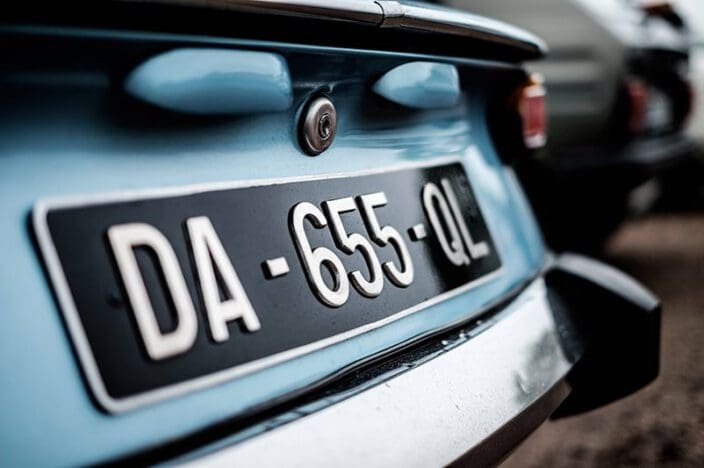Nevada Driving Vision Requirements: Explained
Home / Vision Education Center / Vision & Vision Loss Impacts on Driving /
Last Updated:
Nevada requires you have 20/40 vision if you wish to drive unrestricted. This is generally regarded as a safe cutoff point by medical professionals, without being too restrictive.
Table of Contents
If you can reach 20/40 vision with glasses, you are more or less fine to drive, provided you only drive while wearing your corrective wear. Your vision in your best eye must be 20/50 or higher to get a license restricted to daytime driving, but this is only if your worse eye has a visual acuity of 20/60 or higher.
Like most states, Nevada has rules in place to account for worsening vision, especially among older people. If you’re over 65 years old or get reported for unsafe driving, you may have to retake your vision test or even the entire driving test to make sure it’s safe for you to be on the road.
Nevada Driver’s License Vision Requirements

Driving is one of the most dangerous activities most people regularly perform. States put a variety of laws and policies in place to make sure you can’t legally drive unless you can do so safely.
Nevada is no exception to this. The state requires the usual written and practical test of drivers, as well as a relatively strict vision test. While there are several caveats that will be discussed below, you will need to have 20/40 vision in Nevada in order to drive unrestricted.
You deserve clear vision. We can help.
With 135+ locations and over 2.5 million procedures performed, our board-certified eye surgeons deliver results you can trust. Your journey to better vision starts here.
To establish what this level of visual acuity means, you must first understand what 20/20 vision is, which is “ideal” vision (although technically some people can have even better sight). This just means that at 20 feet (the first number), an individual can see at a level of detail that someone with 20/20 vision would see if they were standing 20 feet away.
What if My Vision Isn’t Perfect?
For totally unrestricted driving, Nevada will generally require that you have at least 20/40 vision in both eyes, although 20/40 vision in one eye is acceptable if you are blind in the other eye. This doesn’t necessarily mean you can’t drive if your uncorrected vision does not meet this standard.
If glasses or contacts (corrective wear) allow you to see at that level of visual acuity, you can drive with essentially no restrictions beyond the requirement that you wear such corrective wear while driving. It is only people below this standard of visual acuity who may find themselves unable to drive or only permitted to drive in the daytime (when it is easier to see).
Nevada has the fairly restrictive vision acuity cutoff of 20/50 for daylight driving, and this is only if your visual acuity in your poorer eye is no worse than 20/60. If your vision with corrective wear is worse than that, things begin to get complicated.
Some drivers are able to benefit from bioptic telescopes. These are basically special attachments to glasses that allow you to quickly glance at things with 3x magnification and then look back through your regular carrier lenses. The process of using these glasses is not unlike how one uses their mirrors when driving.
Nevada permits daytime driving for people who can achieve 20/40 visual acuity through the telescopic lens, and 20/120 or above with their everyday carrier lens. They must also have a 130-degree visual field. This is a metric that is used to essentially measure how wide you can see without moving your eyes.
On the topic of visual field requirements, anyone who does not have a 140-degree field of vision can be denied an unrestricted license (which allows day and night driving). Anyone who does not have a visual field between 110 and 140 degrees can be denied a restricted license (which allows night driving only).
In Nevada, they generally expect that you should be able to see, at 20 feet away, visual details a person with 20/20 vision could see at 40 feet away (hence 20/40). This is pretty much in line with what medical and safety professionals tend to agree is a safe cutoff. People with worse vision than this start to run the real risk of their vision notably impacting their driving.

Changing Vision & Safety
You are your first line of defense against your driving becoming unsafe due to vision changes. If your vision seems to be changing and you notice it is getting harder to drive, talk to a doctor about potential solutions and whether it is still safe for you to be on the road.
One mistake on the road could seriously endanger you or someone else. If your vision is preventing you from safe driving, it’s a serious issue.
Once you reach 65 years old, the rules around license renewal change in Nevada. You will then need to renew your driver’s license every four years (as opposed to every eight years). You must renew your license in person, and you may be required to take a vision test at the discretion of DMV personnel.
While this can be annoying, it is for the safety of you and other drivers. Our vision can deteriorate as we age, even if we do not realize it. This process can identify people who accidentally (or knowingly) driving when they should not.
Nevada also allows family members, law enforcement, and some other individuals to report a driver they think may be unsafe. These reports are not only related to vision, and this process could potentially prompt a reevaluation of your license.
Even if your vision is fine, take note if someone is concerned you are driving unsafely. It is better to adjust bad habits before anyone gets hurt.
You deserve clear vision. We can help.
With 135+ locations and over 2.5 million procedures performed, our board-certified eye surgeons deliver results you can trust. Your journey to better vision starts here.
References
- Nevada. National Highway Traffic Safety Administration (NHTSA).
- Driving Restrictions per State. (September 24, 2019). American Academy of Ophthalmology.
- State Vision Screening and Standards for License to Drive. (June 6, 2003). Prevent Blindness.
- Driver License Testing. Nevada Department of Motor Vehicles (DMV).
- Nevada Driving Laws for Seniors and Older Drivers. NOLO.
- Vision Requirements for Driving Safety. (February 2006). International Council of Ophthalmology.
This content is for informational purposes only. It may have been reviewed by a licensed physician, but is not intended to serve as a substitute for professional medical advice. Always consult your healthcare provider with any health concerns. For more, read our Privacy Policy and Editorial Policy.